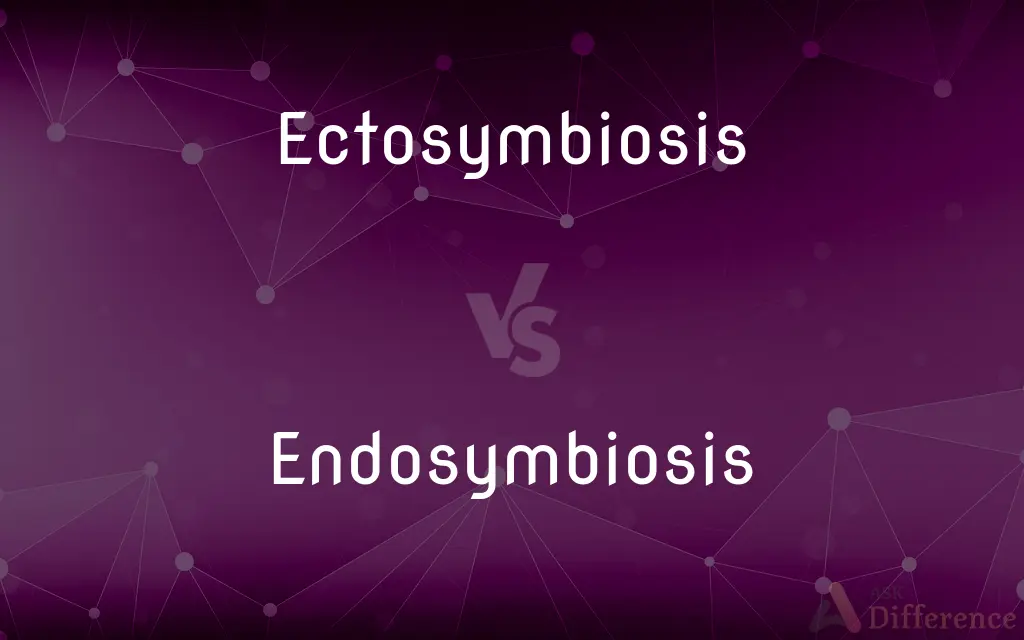Ectosymbiosis vs. Endosymbiosis — What's the Difference?

Difference Between Ectosymbiosis and Endosymbiosis
ADVERTISEMENT
Compare with Definitions
Ectosymbiosis
Ectosymbiosis is a form of symbiotic behavior in which a parasite lives on the body surface of the host, including internal surfaces such as the lining of the digestive tube and the ducts of glands. The parasitic species is generally an immobile, or sessile, organism existing off of biotic substrate through mutualism, commensalism, or parasitism.
Endosymbiosis
A symbiotic association in which one or more organisms live inside another, such as bacteria in human intestines.
Ectosymbiosis
(ecology) A form of symbiosis in which a partner (the ectosymbiont) remains on the surface of its host
Endosymbiosis
(ecology) The condition of living within the body or cells of another organism; an instance of an organism so living.
Share Your Discovery

Previous Comparison
Plot vs. Pilot
Next Comparison
Execute vs. Exercise













































